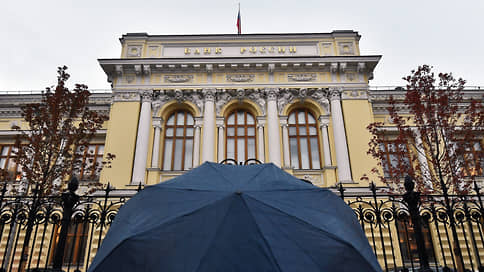Government bond yields returned to below 12% per annum
[ad_1]

The Bank of Russia’s tight monetary policy has ceased to have a negative impact on the debt market. Government bond yields fell by 110–167 bps. p. and returned to a level below 12% per annum. The government bond index, which characterizes the value of the portfolio, has increased by almost 5% since the beginning of the month. In anticipation of the completion of the key rate increase cycle, interest in medium-term bonds, both government and corporate, is growing.
Bets are losing weight
On Friday, November 24, the government bond index RGBITR The Moscow Exchange reached 618.2 points, returning to the values of early August. This is almost 1% higher than the closing values of the previous day and almost 5% higher than the local minimum set at the end of October. The corporate bond index grew less significantly over the week – by 1.6%, to 143.93 points.
Against the backdrop of an increase in the value of OFZs, their profitability decreased. According to Alexander Ermak, chief debt market analyst at BC Region, since the beginning of November, the market average OFZ-PD yield has decreased by 99 bps. p. At the same time, the most significant decrease, by 110–167 bp. p., was recorded for bonds with a maturity of 1–5 years. As a result, the yield on these securities dropped to 11.5–12% per annum. The yield on medium-term issues decreased by 79–101 bp. p., up to 11.4–11.6% per annum. Yields on long-term securities dropped by 62–83 bps. p., up to 11.6–11.9% per annum.
Dear ruble to help
The situation on the market is abnormal, considering that over the past three months the Central Bank has doubled the rate – from 7.5% up to 15%, and also did not rule out another increase before the end of the year. Sovcombank analysts suggest an increase in the key rate by 1–2 percentage points, to 16–17%. The main reason for the recent positive market dynamics, according to Ekaterina Gorbunova, portfolio manager of the TRINFICO investment group, is the confidence of investors that tight monetary policy (MCP) will not be maintained for long. “Some long-term investors perceive the current level of rates to be close to the peak. This encourages them to look closely at medium-term and, in some cases, long-term securities in order to fix high returns for the long term,” notes Ms. Gorbunova.
In November, the strengthening of the ruble added to the attractiveness of local securities. Since the beginning of the month, the dollar exchange rate at trading on the Moscow Exchange has fallen by 4.75 rubles, to 88.65 rubles/$, which is 13.7 rubles. below the high reached on October 9. “A strong national currency may have a positive impact on reducing inflation with a certain time lag next year, which, in turn, may lead to the Bank of Russia switching to a looser monetary policy,” notes Alexander Ermak.
As a result, investors began to buy bonds that had previously fallen in price, but trading volumes are still low.
The total trading volume of OFZs included in the calculation of the RGBITR index at the end of last week amounted to less than 23 billion rubles, which is almost one and a half times lower than the result of the previous week.
Insurance against optimism
At the same time, analysts consider the current optimism to be excessive, and therefore do not exclude the possibility of a correction before the end of the year. According to Alexander Ermak, rates on the OFZ market may return to the levels of the previous local maximum against the backdrop of further growth in inflation and the key rate, changes in the situation on the foreign exchange market and high rates on the repo market. “This irrational optimism, the expectation of a sharp liberalization of monetary policy on the horizon in a year is somewhat surprising,” notes Maxim Chernega, head of the DCM department of the corporate finance department of the investment company Digital Broker.
In this regard, medium-term bonds seem preferable for investment, while the interest rate risk in long-term securities is currently excessive.
“From the point of view of an investment horizon for 3–5 years, fixing the rate at 12% per annum in government securities is not so bad,” notes Maxim Chernega. According to market participants, there are also interesting securities among corporate debt of high credit quality. In recent days, issuers have begun to offer for placement new issues with a circulation period of 1–3 years, the yield on which is 13–15% per annum. As Ekaterina Gorbunova notes, outstanding third-tier issues do not provide a sufficient premium for credit quality.
[ad_2]
Source link





